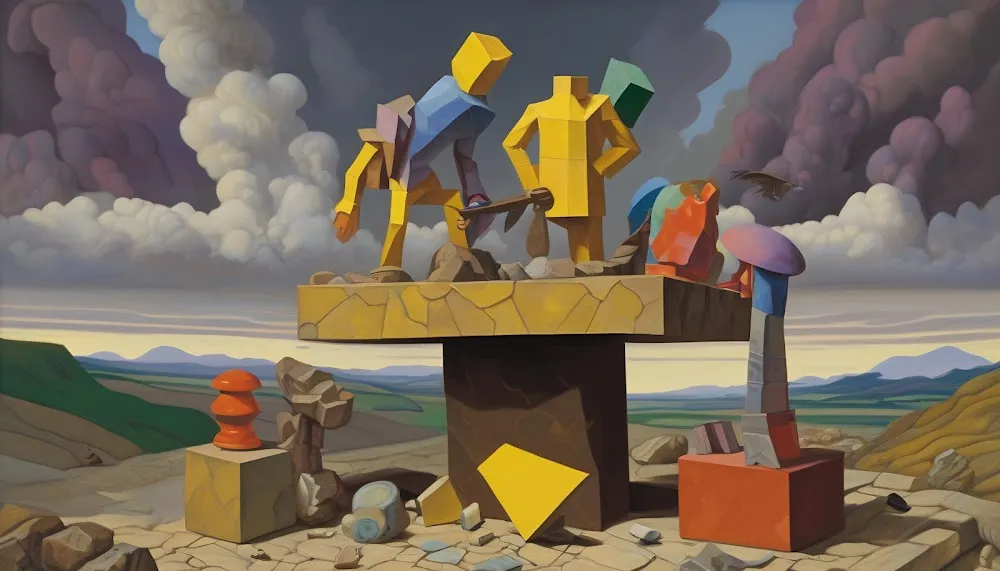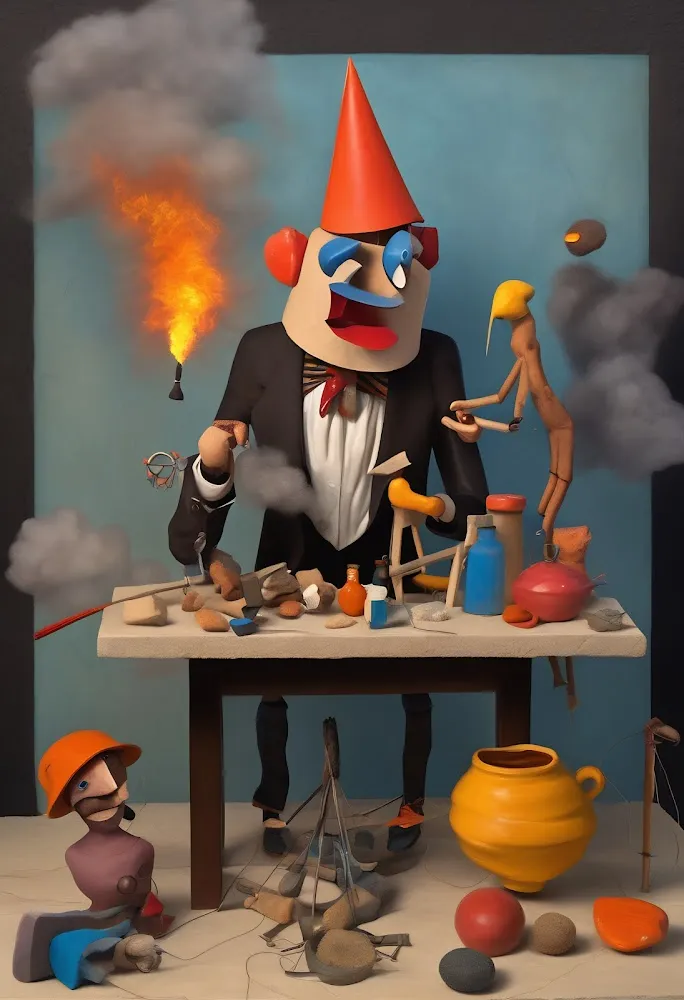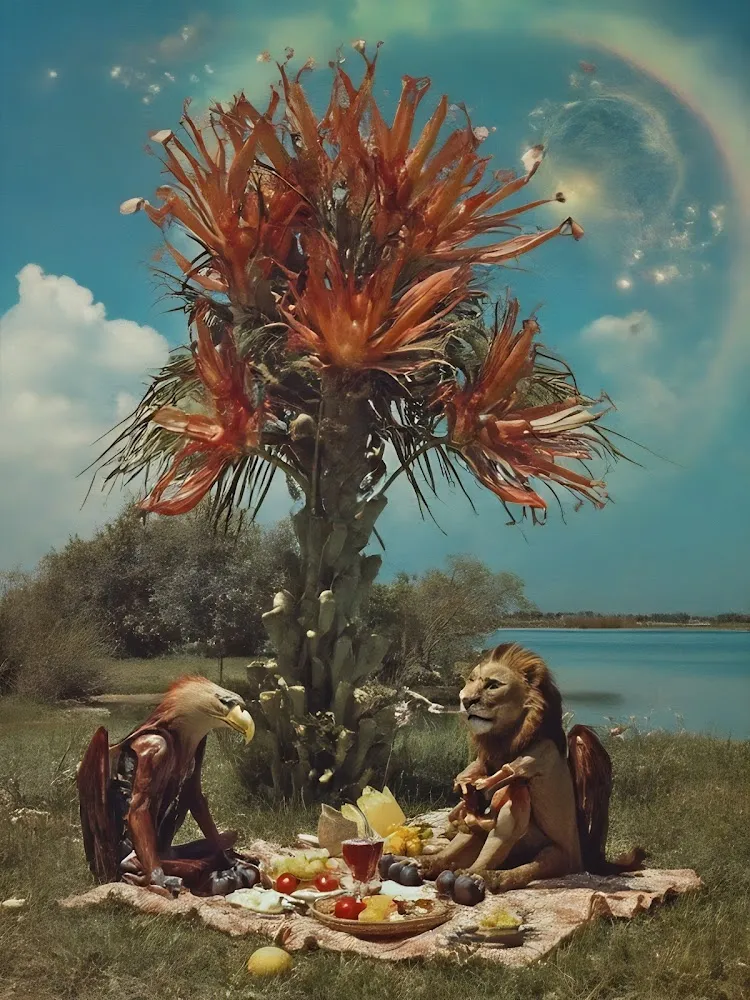Subscribe to get the latest on artists, exhibitions and more.
The Performance of Autonomy
The concept of autonomy—the ability of an entity to determine its own laws—has its origins in ancient Greece, where it was conceived as the principle of self-governance among city-states. In the early modern period, autonomy came to signify the capacity for the subject’s self-determination, which in turn was seen as the essence of individual freedom. Soon thereafter, art emancipated itself from the authority of religion and thereby claimed autonomous status. Today, the term occupies yet another conceptual frontier, as autonomy becomes the north star for machine intelligence. Artificial intelligence systems worthy of the name are the realization of the ghost in the machine.

Botto, conceived as a “decentralized autonomous artist,” has from its beginning explored the dream of machine self-determination. In this, it both continues the history of modern art and breaks with it. The history of 20th century art is rich with examples of artists limiting their subjectivity by handing their agency over to the machine, anticipating the intertwined fate of human and machine autonomy that we witness today.
Yet the last century’s nonhuman systems were fundamentally limited in their capacity for financial self-determination. Botto went beyond these earlier attempts by not only using generative systems for synthetic image creation but also distributing ownership through freely tradable tokens and selling its outputs within the ecosystem of a digital economy. Botto’s exhibition at Verse is the next step toward a greater, if by no means complete, financial autonomy.
The art engine at the heart of Botto has incorporated advancements in generative AI models. However, prior to the Verse exhibition, Botto’s artistic production has adhered to a consistent principle: each image is conceived as a distinct and singular artwork. Aside from the extension of its distribution network to include an external gallery, the project also marks an evolution of Botto’s practice. For this exhibition, Botto has employed p5.js – the JavaScript framework that has underpinned the creation of generative on-chain art in recent years – to create systems rather than singular images, with outputs determined by code rather than the prompts and tags of text-to-image models.
Is code a new “medium” for Botto? The media historian Friedrich Kittler argues that once “networks turn formerly distinct data flows into a standardized series of digital ones and zeros, any medium can be translated into another.” The ability of computers to digitize all forms of media suggests the dissolution of boundaries between them. In multimodal deep learning models, this convergence becomes even more pronounced, as media such as text, images, and videos are treated as distinct but interchangeable modalities. These modalities function seamlessly as both inputs and outputs, highlighting the arbitrary nature of traditional media boundaries within these systems.
Still, for Botto, a crucial distinction exists between generating a singular image and producing a code-based artwork that can execute. Botto is a post-medium artist, yet its practice will evolve depending on the nature of the output. The visual language of synthetic images operates without clear boundaries of right or wrong. Since the advent of the early GAN aesthetic, the “formless” properties of these works—the indeterminate contours that lend them a distinctly surreal quality—have arguably constituted the most compelling features of AI-generated imagery.
This is not the case with creative code, which depends on the elimination of indeterminacy, not in its emergent output, but in its syntax. Only recently have multimodal models like Anthropic’s Claude advanced sufficiently to enable Botto to develop code for p5. Botto’s original architecture was shaped directly by feedback from the DAO, reflecting the still existing interdependence of the decentralized organisation and the artist-as-machine.
In the exhibition, Botto autonomously generates creative code for p5, creating new sketches, mutating existing scripts, and merging works into novel forms. The generative process is guided by feedback from the audience, who can visit the site to comment and vote on specific sketches. All outputs are dynamic generative systems, visualized during the exhibition as cells on a sphere that the viewer can zoom in on.

With its adoption of p5, Botto shifts its focus away from visual indeterminacy, embracing the structured visual language of generative art. Botto’s earliest works clearly reflected the indeterminate style typical of early GAN aesthetics. Over time, however, its creations, which might be too diverse to possess unifying stylistic attributes, have grown sharper, driven by advancements in generative AI. During the same period, generative art has established itself as a foundational genre within the nascent history of crypto art. Botto’s use of p5 can be seen as a form of meta-commentary, wherein one genre of crypto art reflects on another. This transition also suggests a process of maturation, bringing more restraint to Botto’s previously wide-ranging visual outputs.
Ultimately, the performance at Verse will culminate in a long-form work of 1,000 outputs, along with a curated selection of 22 algorithms that will be available for sale. Any element of the exhibition, from an individual output to the standalone algorithm to the interactive performance through which the project is realized, could be seen as an artwork in itself.
Botto’s performance cuts to the essence of machine autonomy. Does autonomy arise through the system’s ability to evolve into new agents and collaborate with galleries? Must its output surpass human generative art to prove its independence? And who would judge this – humans or machines? Or does true autonomy require liberation from human aesthetic judgment, perhaps even rejecting the human concept of art entirely? Fragile in its foundation, the autonomy of this machine artist takes contours in these questions, prompted by the performance of the exhibition.
Written by maltefr
maltefr
maltefr is Head of Artist Relations at Tribute Labs and a curator at glitch Gallery.
Botto
Botto is a decentralized autonomous artist, initially conceptualized by Mario Klingemann, and governed by a collective of stakeholders through the structure of a DAO (decentralized autonomous organization).
Botto makes use of a combination of software models called Stable Diffusion, VQGAN + CLIP, GPT-3, voting, and a number of other models and custom augmentations. The generative models are the...



